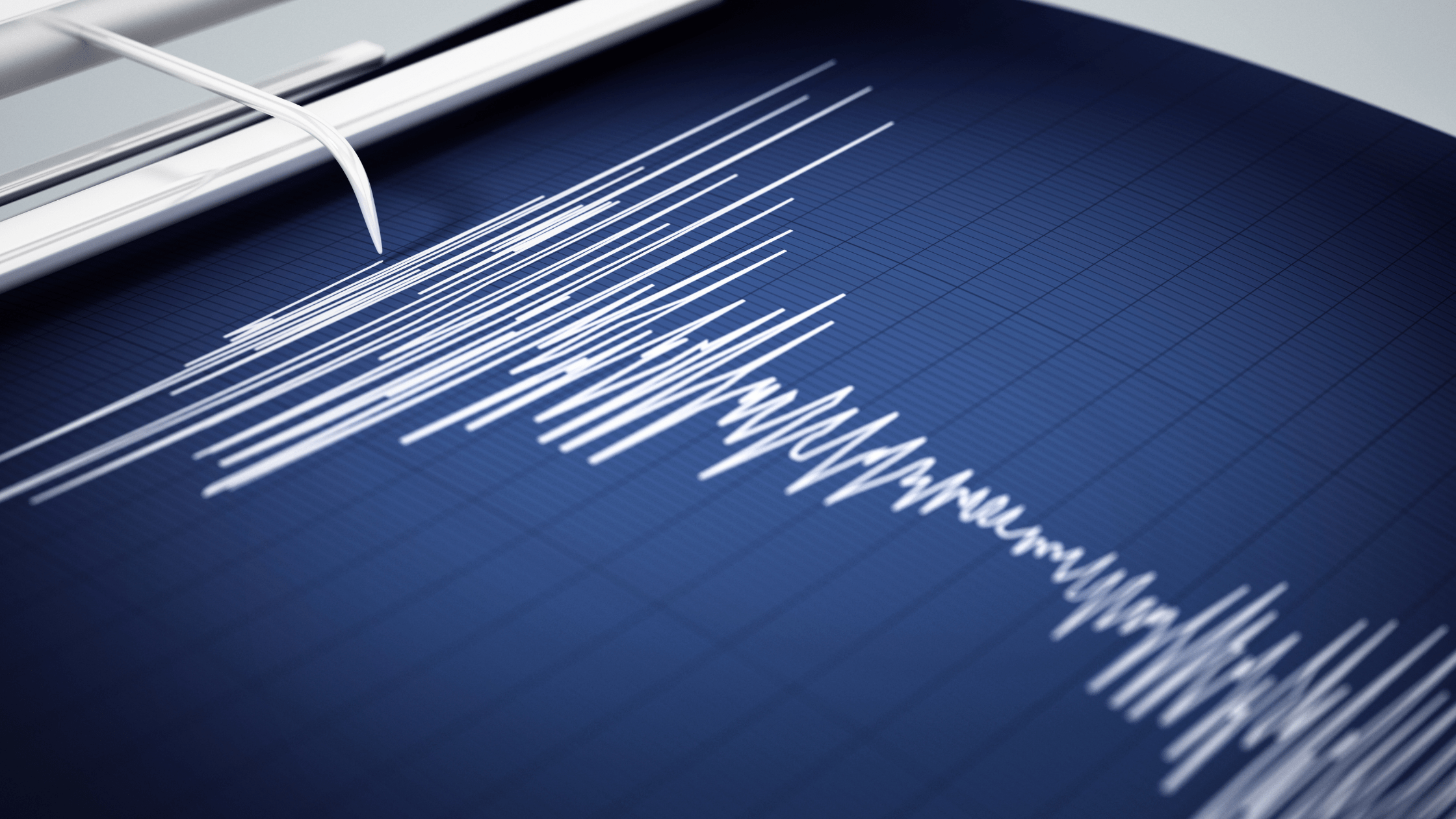This is Part 2 in our Earthquakes in California series. In this post, we will discuss earthquake fault lines, California earthquake prediction, earthquake prevention and earthquake statistics like the deadliest earthquakes recorded.
Earthquake Faults
There is another process at work in the Sierra Nevada Mountain Range that speaks directly to the topic of this article: faulting. It is along breaks or faults in the earth’s crust where earthquakes occur. To understand how earthquakes are responsible for releases of energy, it is necessary to first understand the various kinds of earthquake faults involved, as well as the movement associated with each kind of fault. There are four general types of faults. For the purpose of describing the movement of each type of fault, imagine that you are holding two blocks of wood, one in each hand.
Normal Fault: the block in one hand pulls away from the block in the other hand, with each block moving vertically in relation to the other, breaking the surface of the earth at some position along the fault line. In the Sierra Nevada Mountains, the Owens Valley Fault is the result of the pulling away and uplifting of the mountains in relation to the adjacent valley. The famous Lone Pine earthquake of 1872, which killed nearly the entire population of Lone Pine, occurred along a normal fault system.
Reverse Fault: the block in one hand moves toward the block in the other hand, with each block moving vertically over the other, breaking the surface of the earth at some position along the fault line. Although occurring on a slip-strike fault system, the Loma Prieta earthquake of 1989 demonstrated the vertical displacement characteristic of a reverse fault, coupled with horizontal motion associated with a slip-strike fault system.
Blind Thrust Fault: the block in one hand moves toward the block in the other hand, with each block moving vertically in relation to the other, without breaking the surface of the earth at some position along the fault line. It was a blind thrust fault earthquake that struck Northridge in 1994.
Slip-Strike Fault: the block in either hand slides horizontally past the block in the other hand, breaking the surface of the earth at some position along the fault line. The Hector Mine earthquake of October, 1999 was the product of energy being released on a slip-strike fault system. The San Andreas Fault system is a notorious example of this type of fault. Consequently, the notion that California will “drop” into the ocean is, thankfully, false.
It is implied by the original definition of an earthquake given earlier – an earthquake is a release of energy caused by an abrupt movement along a fault – that not all pieces of the earth’s crust move relative to each other without incident. Rather, it is the resistance of opposing plates along their boundaries that creates an enormous potential for releasing energy – stored energy that is often released during a single event: an earthquake. If one considers that faults can represent lengthy sections of plate boundaries –the San Andreas Fault, for example, is over 1,000 miles long – it is easy to understand how opposing segments of crust may grind past each other.
Earthquakes in California
There are many places in California where the plates can get hung up. One such place is marked by a bend in the San Andreas Fault near Los Angeles, called the “big bend.” This one hundred mile northwesterly bend apparent along the boundaries of the North American and Pacific plates has caused buckling in the earth’s crust, resulting in the uplift of mountains east of the Los Angeles basin. The San Gabriel Mountains and the San Bernardino Mountains are among the fastest growing in the world with earthquakes in California documented here.
When an earthquake occurs, a sudden release of energy is emitted in all directions in the form of waves from the point of initial seismic activity, called the focus. The focus is generally situated below the surface of the earth. The epicenter of an earthquake is the location on the surface of the earth directly above the focus. Earthquakes typically emit three kinds of seismic waves: P-waves, or primary waves; S-waves, the secondary waves; and surface waves. P-waves cause particles to vibrate back and forth along the direction that the wave is traveling. S-waves cause particles to move perpendicular to wave direction. Surface waves, as the name suggests, travel along the surface of the earth generating horizontal and vertical vibrations, like the movement of a rope that is whipped. Generally, it is the surface waves – like ocean waves – that are responsible for the most of the damage resulting from an earthquake, since surface waves produce more ground movement and, as a consequence, are slow to pass. Surface waves can be extremely disastrous in areas where the soil in not consolidated, such as an evaporated lake basin or a river floodplain. Areas of loose, unconsolidated soils may actually take on the form of a passing surface wave, causing extensive damage to any structure on the surface. This condition is referred to as liquefaction.
Any location where there exists the possibility for displacement of the earth’s crust is a potential earthquake area. Higher risk areas are along known tectonic plate boundaries. However, there are stress points located in mid-continent locales that are capable of producing earthquakes as damaging as those associated with plate boundary activity. The New Madrid Fault zone near Memphis, Tennessee has produced some of the most powerful earthquakes described in North America. Three earthquakes generated along this zone in 1811 and 1812 were estimated to have been more powerful than the great earthquake of 1906 in San Francisco, California. In fact, church bells rang in Philadelphia as a result of these quakes. In the region of the New Madrid Fault zone, seismologists believe that tensional forces have released energy from a failed rift – an area where the earth began to break apart, but ceased to spread – deep in the earth’s crust. Adjustments within the crust can produce very powerful and deadly earthquakes.
Earthquake Prediction
Predicting earthquakes is one of several important goals being pursued by seismologists. Earthquake prediction is usually defined as the specification of the time, location, and magnitude of a future earthquake within stated limits. At this point, seismologists are searching for any signal that could suggest a pattern in the development of earthquakes. Conventional thinking about earthquakes is that a region remains quiet for years following a significant quake, while stress slowly accumulates underground. Over time, the number of small and moderate tremors increases, building up to the next big earthquake. This theory seems to apply in northern California. However, the earthquakes of southern California do not follow this pattern. Along the southern region of the San Andreas Fault, the magnitude of earthquakes in California remain somewhat constant.
Seismologists are also reviewing tidal data to make predictions about earthquakes. From timing more than 13,000 small to moderate quakes on California’s San Andreas Fault system, seismologists from the University of California at Los Angeles have shown a correlation between tectonic activity and the lunar and solar cycles. The gravitational pull of the moon and sun, evident in ocean tides, influences tectonic stresses. As tides wax and wane, they alternately increase and relieve stress along faults. According to this scheme of earthquake prediction, seismic events should be more common when the tidal pull is strongest. To date, data has not supported this theory.
Another environmental signal that seismologists are investigating is the potential link between earthquakes and weather. It was observed that seismic activity during a five year period established a pattern for earthquakes in California, whereby predominantly tiny quakes occurred most frequently in September and least often in April. After examining many potential causes of the cycle, seismologists hypothesized that atmospheric pressure may be the controlling factor. When atmospheric pressure on the earth’s surface remains low, as it does during the warm summer months (the average atmospheric pressure is greater during cooler months), it lessens the weight of the atmosphere pressing on the ground. This situation reduces the friction on rocks, allowing earthquakes to occur more easily.
A natural phenomenon that has recently been evaluated for potential in earthquake prediction is upper atmospheric disturbance. The ionoshpere is that part of the atmosphere beginning approximately 40 miles from the surface of the earth, consisting of high concentrations of ions and free electrons. Through utilization of a network of satellites – Global Positioning System (GPS) – data can be obtained depicting the electron density of the atmosphere at a given altitude. This is accomplished by sending radio signals to ground-based receivers. Displacement of the ground as a result of an earthquake generates waves that cause fluctuations in ionosphere electron density. This research is aimed at discovering patterns in atmospheric activity that precede large-scale ground displacement.
Earthquake Prevention
The notion of preventing earthquakes seems absurd at a first glance. What is implied by this idea is not preventing the occurrence of an earthquake, but reducing the magnitude – and the resulting destruction – of a seismic event. Like many great scientific discoveries, controlling the effects of earthquakes was discovered by accident: water forced underground during an oil recovery procedure caused several small tremors. From this event, geophysicists hypothesized that the pressure of water forced underground may gradually relieve the strain accumulating in the rocks below. Furthermore, water pumped beneath the surface could potentially act as a lubricant, allowing rock surfaces to slide by each other. In essence, hydro-pressure techniques could be deployed to trigger smaller, more frequent tremors along high-risk fault zones, thus reducing the likelihood of a large earthquake.
Initially, the risks associated with testing methods for managing seismic activity would be substantial. The impact of triggering an inaugural tremor along the San Andreas Fault – or any fault associated with earthquakes in California, for that matter – must be seriously considered. It is likely that only a series of controlled experiments along the entire length of a particular fault zone would lead to predictable results with respect to that area. The challenge for scientists working to control seismic activity is to achieve a level of predictability without a disastrous learning curve. The complexity of variables influencing seismic activity, and the enormity of potential energy under consideration, render the consequences of miscalculating the results of inducing earthquakes a responsibility not likely to be assumed by any public or private agency in the near future.
Deadliest Earthquakes
1) Tangshan, China; 1976; 7.4 magnitude; 655,000 deaths
2) Gansu and Shaanxi, China; 1920; 8.3 magnitude; 200,000 deaths
3) Qinhai, China; 1927; 7.7 magnitude; 200,000 deaths
4) Tokyo, Japan; 1923; 7.9 magnitude; 142,810 deaths
5) Messina, Italy; 1908; 7.0 magnitude; 110,000 deaths
6) Northern Peru; 1970; 7.9 magnitude; 67,000 deaths
7) Western Iran; 1990; 7.5 magnitude; 50,000 deaths
8) Erzincan, Turkey; 1939; 7.6 magnitude; 32,700 deaths
9) Quetta, Pakistan; 1935; 8.1 magnitude; 30,000 deaths
10) Armenia; 1988; 6.8 magnitude; 25,000 deaths

